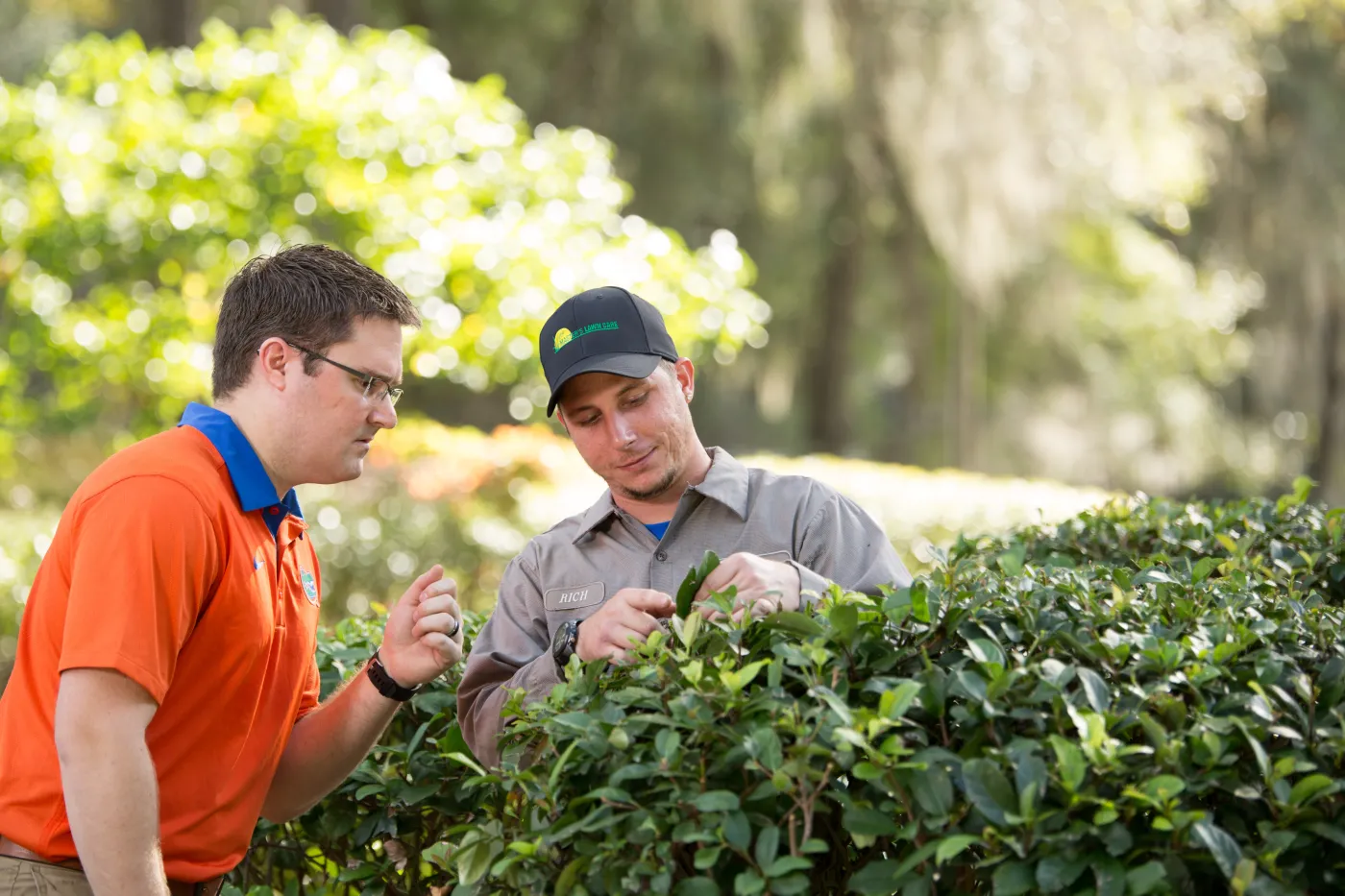How are moths and sod webworms related? Very similar to a caterpillar turning into a butterfly, the tropical sod webworm turns into a moth. Sod Webworms damage your lawn by chewing the grass down to the leafbud as it's primary source of food, causing a similar effect on the lawn as if it were scalped with a mower in random spots. If there's anyhitng St. Augustine grass does not like, it's being scalped - which causes it to turn brown. The chewed or affected areas of the lawn typically get larger overnight, because that's when the webworms are the most active. The round pattern comes from the moth's eggs being laid in one place and the webworms eating out from that initial hatching.
Webworms are known for primarily attacking fresh-installed sod (hence the name 'sod webworm') due to sod's high levels of nitrogen in the turf from the sod farms requiring quick growth rates to re-produce sod at a faster rate. They can attack so fast that some will even ask if the webworms came in the new sod - but the abundance of moths typically show otherwise. They're also known for attacking shaded areas of lawns due to the moths residing in the trees.
Lately, however, a shortage of new sod and an abundance of moths have led webworms to focus on existing lawns rather than just new sod. So, the appearance of the moths should be a red flag, and a reason to begin carefully watching for pest damage in your Gainesville lawn. Below is a photo of a Gainesville lawn with webworm damage (the chewed leaf edges and the remnants of the leaves after the webworm's digestion). The photo also shows grey leaf spot fungus (the grey tip on the end of the leaf causing the grass blade to curl up) which is a disease. It's a good thing this new client signed up for our lawn care program!
The second photo shows a webworm that we found in the same lawn and more of the chewed leaf blades and remnants of the digested leaves (little green balls).
Many clients have asked about prevenative treatments, but the sad news is that prevention has little to do with insecticide and more to do with limiting the amount of quick-release nitrogen getting on the lawn as it gets later in the season. Due to the amount of rainfall in our area and the lack of residual insecticides that work on webworm populations, much of the control is after their infestation is noticed. This is why it's extremely important to be on our lawn care program, as it covers not only limiting the fertilization of nitrogen to help prevent webworms, but also treating the webworm infestation when it occurs, and as many follow-up treatments as your lawn needs.
Have you noticed your lawn turning brown? or noticed moths flying when you walk through your lawn in the morning? Those are warning signs that the Tropical Sod Webworm is about to feast on your grass.
If you think your Gainesville lawn has pest concerns, please don't hesitate to contact us at 378-LAWN. We want to help in any way we can. Below is a video from UF's extension office in Collier County, but it relevant to Alachua County as well.


